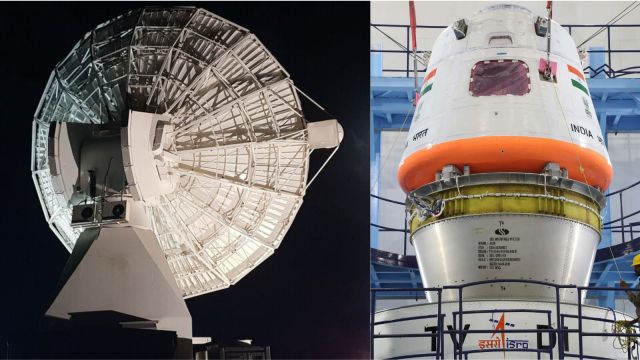Gaganyaan’s radio equipment to undergo tests at ESA’s German facility
ESA’s 15m antenna in French Guiana, South America, to track Gaganyaan-1.
 Gaganyaan’s radio equipment, about the size of a suitcase, has been shipped to the Ground Segment Reference Facility (GSRF) in Germany. (Express Photo)
Gaganyaan’s radio equipment, about the size of a suitcase, has been shipped to the Ground Segment Reference Facility (GSRF) in Germany. (Express Photo)The European Space Agency Thursday announced that the key radio equipment that will be deployed for Gaganyaan mission — India’s first attempt at sending humans into space — will soon undergo tests at one of its facilities in Germany.
This pace up in activities pertaining to Gaganyaan comes after the Indian Space Research Organisation (ISRO) signed a Technical Implementing Plan (TIP) with the ESA on December 4.
Under the TIP, the ESA will facilitate Ground Tracking Support for all Gaganyaan missions.
On December 6, ISRO and the Indian Navy conducted the demonstration of ‘well deck’, a vital step in recovering the crew module upon its landing on sea surface.
The Gaganyaan mission will carry three Indian astronauts to about 400 km from the Earth’s surface for three days. Prior to the crewed flight, the ISRO has planned two uncrewed preparatory missions and a string of technology development and demonstrations — Gaganyaan-1 (G1) and Gaganyaan-2 (G2). G1 involves testing the safe re-entry of the spacecraft and its orientation upon its dive into the sea.
Gaganyaan-1, expected to be launched in early 2025, will receive support from ESA’s Kourou station where a 15m antenna is operating both in S-band and X-band wavelengths. Kourou is located near Cayenne, the capital of French Guiana.
Gaganyaan’s radio equipment, about the size of a suitcase, has been shipped to the Ground Segment Reference Facility (GSRF) in Germany. Specific compatibility tests will be performed to ensure that the Gaganyaan’s radio transmitter and receiver effectively communicate with ESA’s antenna in Kourou in South America.
Managed by the European Space Operations Centre (ESOC), the GSRF is used by ESA mission development teams to experiment and tinker with systems which are under development. Here, tests of new or upgraded software or hardware are performed and experiments to identify, address and resolve issues that could potentially affect the missions are conducted.
Previously, tests for missions such as Rosetta, Gaia, ExoMars Trace Gas Orbiter, BepiColombo and Solar Orbiter were performed at GSRF.
“The Network Operations Centre at ESA’s ESOC mission control centre in Germany will coordinate a series of radio antennas in the global European Space Tracking network (Estrack) that will enable ISRO track, monitor and command the Gaganyaan crew module throughout each mission,” said Octave Procope-Mamert, Head of Ground Facility Operations at ESA.
The German Aerospace Center (DLR) and the Spanish National Institute for Aerospace Technology (INTA) will join in tracking the future Gaganyaan missions.







